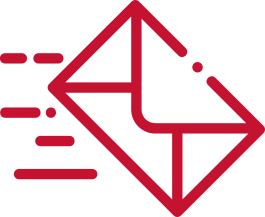Katalyst Network Group Blog
Resources and insights for technology and executive leaders

Make Your Worst Day Boring: The Real Goal of BCDR
Backups aren’t enough anymore. When ransomware hits, the real question is: how fast can you get back online? In our latest blog, we break down what modern business continuity and disaster recovery (BCDR) looks like—and how to make sure your worst day is nothing more than a bump in the road.

Cutting Through Cybersecurity Noise- How to Reduce Alerts and Focus on Real Threats
Cybersecurity teams face a constant flood of alerts and threat reports. Learn how to cut through the noise, reduce alert fatigue, and focus on the threats that matter most.

How Outsourced IT Can Give Your Team Back 20+ Hours a Week
Many mid-market IT teams spend more time putting out fires than driving innovation. In this article, Katalyst shares how our outsourced IT services help organizations reclaim 20+ hours every week, strengthen cybersecurity, and give internal teams the freedom to focus on high-impact projects.

The Hidden Cybersecurity Risk in OT: Why Flat Networks Are a Dangerous Holdover
Many operational technology (OT) environments still rely on flat network architectures—but this outdated design creates serious cybersecurity vulnerabilities. Learn why flat networks increase risk, how attackers exploit them, and what steps industrial organizations can take to modernize their OT security strategy.

Why Cyber Resilience Should Be a Business Priority in 2025
Cyber resilience is more than a buzzword—it’s a must-have strategy in today’s evolving threat landscape. Here’s how your organization can prepare to recover quickly and keep business moving after an attack.

Navigating Breaches – What to Do When Your Business Gets Hit
When a breach hits your business, every second matters. In this post, we share real-world strategies for responding to cybersecurity incidents—from containment and communication to recovery and prevention.

The Truth About AI: What’s Real, What’s Hype, and What It Means for Business
AI isn’t taking over—but it is transforming how businesses work. From process automation to cybersecurity, we break down what’s real, what’s hype, and how organizations can start using AI effectively without the fear.

What You Missed: Key Takeaways from the 2025 Cybersecurity Annual Report Webinar
If you didn’t catch our July 9th live webinar discussing the 2025 Cybersecurity Annual Report, you’re not alone. But you did miss a discussion packed with real-world insights that organizations across industries are already acting on.

The Next Ransomware Wave: Why Your Business Needs a New Playbook
The Next Ransomware Wave: How to Prepare and Protect Your Business Katalyst Ransomware has transformed from isolated attacks into a

